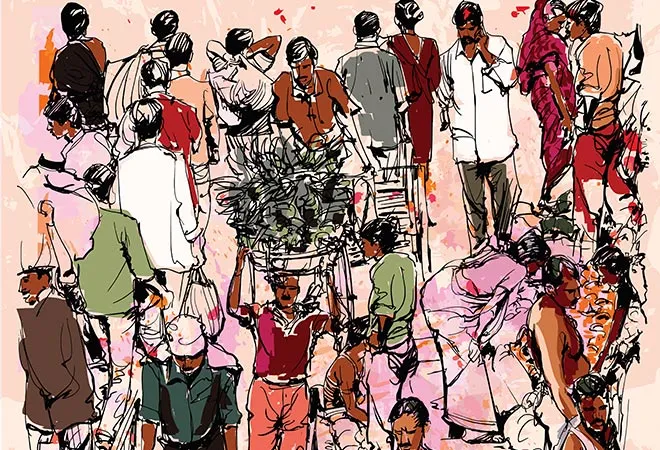-
CENTRES
Progammes & Centres
Location
Given that India is on the path to urbanisation, there is a dire need for governance reforms at the municipal level to ensure that it reaches the quality of its rural Gram Panchayat counterpart

Local democracy in any democratic country is of great significance. It is the level at which people’s daily lives get impacted by the quality of governance that the local bodies deliver. It is also the arena where citizens have an opportunity to participate in the decision-making process and effectively influence it. For those who wish to actively engage in politics, it is the stage to learn and practice the basics of democracy before moving to higher levels of politics at the state and the central levels. However, for such a large and diverse country as India, one cannot generalise the quality of urban and rural democratic governance. Despite the apparent complexities, it may be only possible to postulate some features of local democracy that could, in general, hold true for the country as a whole.
The first of these propositions is drawn from the Constitution (73rd) Amendment Act and Constitution (74th) Amendment Act 1992. The two Amendment Acts sought to create empowered local self-governing institutions—73rd for the panchayats and 74th for the municipalities.
The instrument of the Gram Sabha or the Village Assembly was its standout feature enabling nearly a billion Indians to directly participate in the decision-making process of their villages.
The 73rd Amendment proved to be a turning point in panchayat governance. It provided tools through which direct democracy could be practised in India’s villages. The instrument of the Gram Sabha or the Village Assembly was its standout feature enabling nearly a billion Indians to directly participate in the decision-making process of their villages. All adult members of a village above the age of 18, who had their names in the electoral rolls, could contribute to the Gram Sabha deliberations and cast their vote in the elections. As the general body of the village, it had powers to supervise and regulate the activities of the local executive body, the gram panchayat, and its officials. It could discuss all village issues and approve the budget plan of the local government.
The functioning of the Gram Sabha in different states and specific villages may range from good to ordinary, depending on the individual character of the people in the village and the local democratic traditions and strengths in the respective states. However, the functioning of the Gram Sabha leaves a lot of room for improvement. There are concerns about the independent judgment of women while voting. A survey revealed that 69 percent of women had followed instructions from their spouses when it came to voting. Further, issues of caste, especially the domination of the upper castes, continue to be a factor in village life. However, studies have established that, despite limitations in performance, the Gram Sabhas have diluted the oligarchic hegemony of the upper castes in village governance issues. It is expected that, over time, past hierarchies would give way to a more egalitarian village society.
Unfortunately, the 74th Amendment could not conjure up a democratic instrument similar to that of the Gram Sabha in the urban scenario. While attempts were made to make urban governance more proximate to people through the ‘wards committees’, the mechanism still remained representative and could not replicate the Gram Sabha. Consequently, there was no direct people participation in city affairs and decision-making processes. The concept was defeated by the large size of the cities and political reluctance to share power. Studies have established that the larger the city got, the weaker the voice of the individual citizen became in the affairs of the city.
The functioning of the Gram Sabha in different states and specific villages may range from good to ordinary, depending on the individual character of the people in the village and the local democratic traditions and strengths in the respective states.
The Government of India (GoI) attempted to replicate the Gram Sabha in urban settlements through the Model Nagar Raj Bill, which prescribed the Area Sabha as the body of all the persons registered in the electoral rolls for every polling booth in a municipality area. However, even in concept, as laid out by GoI, it remained an advisory body and could not reach the strengths of a Gram Sabha in controlling city affairs. It also found little support among the states and ended in an unsupported whimper.
The second generality that could be advanced about villages and cities is that voter turnout for panchayat elections exceeds that of the voter turnout in the cities for municipal elections. For instance, voter turnout was 79 percent in the 2021 panchayat polls held in 12,711 villages in Maharashtra. Similarly, in West Bengal, where panchayat elections were held this year, voter turnout stood at 80.71 percent. On the other hand, Kolkata had 67 percent voting in municipal elections. In the 2023 Uttar Pradesh municipal elections, the voter turnout was between 50 and 53 percent in the three phases of voting.
Similarly, in the 2020 Delhi municipal elections, the overall turnout of voters was 50.74 percent. What was even more striking was that, in the predominantly middle-class areas, the voting percentage fell to 40 percent and went further down to 33.7 percent in some localities. Surprisingly, the same city recorded a voter turnout of 62.59 percent for the Delhi state assembly elections and 60.6 percent for the 2019 Lok Sabha elections. This was not a one-off phenomenon. Several other Indian cities reveal a similar pattern, with voting averaging between 45 and 48 percent. It would be safe to assume, based on a comparative study of the voting patterns in the country, that municipal voting is below the rural, state and national averages. This trend leads us to the conclusion that there is a heightened disinterest of urban voters in municipal voting.
It would be safe to assume, based on a comparative study of the voting patterns in the country, that municipal voting is below the rural, state and national averages.
There could be many reasons for the urban despondency in civic elections. People do not exercise their right to vote as they feel that this is an exercise in futility because of their inability to change anything on the ground. This was precisely the reason citizens gave in a study conducted in 2016. The study found the ineffective power of the vote as the primary reason for voter apathy. Those citizens who had voted earlier had found no difference in the quality of service delivery of the municipality, irrespective of who got elected.
A deeper analysis of this phenomenon leads us to the disempowered state of the municipal bodies. Their functions are determined by state statutes that the states can amend. Financially, their weaknesses were aggravated by the implementation of the Goods and Services Tax (GST), which subsumed many municipal revenue streams. The states also control the top administrative appointments in municipalities, reducing the mayors to figureheads. In all these critically significant matters, the citizens have no say. Citizens of the larger cities face the additional problem of parastatals. These are state government organisations performing specific municipal functions that are taken out of the purview of municipalities. They are governed independently, and the municipalities have little role to play.
People do not exercise their right to vote as they feel that this is an exercise in futility because of their inability to change anything on the ground.
The above facts explain the urban voter’s lack of concern. Since cities themselves are powerless and are held in a suffocating embrace by the states, with little independent authority to make decisions, municipal elections appear to become a futile exercise. This primary cause of the urban voter’s indifference should be a cause of national worry. The quality of local democracy is vital for national democratic health. The above analysis clearly points out the dire need for governance reforms at the local urban level. Only then would urban governance reach the quality of its rural counterpart. Urban governance reforms are even more critical since India is on the path to urbanisation, with more cities and a growing number of citizens destined to live in urban settlements.
Ramanath Jha is Distinguished Fellow at Observer Research Foundation
The views expressed above belong to the author(s). ORF research and analyses now available on Telegram! Click here to access our curated content — blogs, longforms and interviews.

Dr. Ramanath Jha is Distinguished Fellow at Observer Research Foundation, Mumbai. He works on urbanisation — urban sustainability, urban governance and urban planning. Dr. Jha belongs ...
Read More +